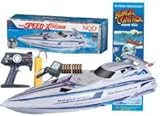Fly fishing for carp is awesome and frustrating at the same time. Carp have a really uncanny ability to spit out baits they deem suspicious before you have a chance to set your hook. Although it’s a very exciting thing to see, it can also be heartbreaking to see a large carp disregard your bait and quickly swim away. If you do hook one, however, hold on for deal life and hold on to that trembling, vibrating fishing pole!
Carp regularly come to the surface looking for food and the best baits to lure them there are breads, chic peas, salmon eggs and canned corn. These are all inexpensive baits as well. These baits must be securely attached to a #4 or #6 hook. It’s advisable to break your bread into small portions, dampen it, seal it in a sandwich bag, and let it sit in the sun for about an hour or so. Since different breads have different textures,you’ll have to experiment to know which one will stay firm enough to cast. Another great bait are the pellets which you can buy ready to use. These are simply store made versions of classic baits, all rolled into a convenient, and smelly pellet!
Carp tend to scare easily, so when they begin to swim around your bait, be careful not to jerk the bait and scare them away. The longer they analyze the bait, the more comfortable they’ll become. This is the fisherman’s best chance for a nice strike. This tactic can be very useful if using zig rigs.
If a carp takes your bait, quickly rebait your hook and cast back in. Don’t cast directly on top of the feeding carp or they will surely scatter. Cast away from the feeding area then slowly reel the bait into position. Slowly reel your bait into the middle of the feeding carp, and try hard to keep it as close to the surface as possible. You may want to rig it 6-8 inches unter a float to ensure it sits close to the surface.
Here are some tips that have been helpful to me:
-Use smaller amounts of bait for carp. They nibble at the bait, and a big chunk will allow them to nibble for a long time before getting to the hook. You don’t want them to get their fill without taking your hook.
-Use heavyweight line and a steel leader. Carp tend to rub their teeth and gums together after they bite, and this can break your line. I recommend at least thirty pound test line, as carp are voracious fighters.
-Dip a piece of sponge in some fish scent (can be bought at any bait 7 tackle store) and hang the sponge above your hook. The scent will help the carp find the bait-and your hook.
-Using a float is a good idea because it helps keep your bait close to the surface and it’s easy to find your rig. You can also tell right away when you get a bite.
-When fly fishing for carp, use a standard five second count after your fly or bait hits the water. If you don’t get any hits, increase it to ten seconds. Carp tend to practice restraint if they are unsure of a bait. Those extra seconds could mean the difference between getting a bite or not.
In the end, it really isn’t the bait that’s most important but how the bait is fished. Throwing some bait into the water before fishing, also called “chumming”, can also be an effective technique to draw carp to your fishing area. This makes the carp think that there is an excessive amount of food for them there and before you know it there will be a large school of them ready to feed. The number one key to fishing is patience. If you can wait them out and wait for them to realize there is food available, you’ll definitely catch a big carp.

